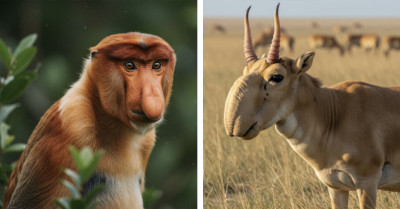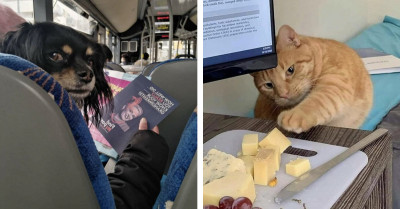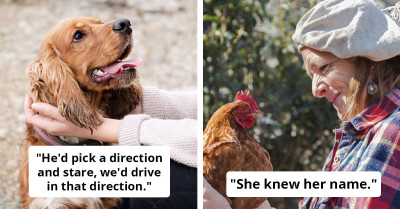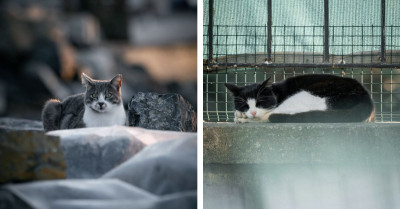50 Orange Cats Who Clearly Think They’re the Stars of the Show
There is a reason the internet keeps circling back to orange cats. They crash Zoom calls. They stage sleepy revolutions on clean laundry.
They show up at the door like tiny landlords collecting rent in treats. You never know if you are about to witness a cuddle, a crime, or both. That unpredictability feels oddly familiar.
Most of us are just trying to get through the day, then something ridiculous happens, and the mood breaks open. Cue the orange cat.
On the subreddit One Orange Braincell, people gather to compare notes. Some posts feel like love letters to aging ginger royals who still own every room.
Others are comedy reels in four paws. A kitten rescued from a dumpster who now rules the couch. A senior cat glued to his human after a four-day trip.
A trio of oranges is asleep in a perfect circle, like a fuzzy solar eclipse. It feels communal. Everyone adds a piece of evidence to the same running joke.
But under the jokes sits a real question. Are orange cats truly different, or are we just very online with a soft spot for chaos? We asked a certified cat behaviorist to help sort the folklore from the facts. The answers might surprise you.
1. He swears he’s fine, but emotionally, he’s under the furniture too.
First, a quick science detour you can tell your group chat. The famed ginger coat comes from the orange gene on the X chromosome. It produces phaeomelanin, which gives that marmalade shade. Because the gene is sex-linked, males need one copy to go full pumpkin, while females usually need two. That is why ginger boys are common and ginger girls are rarer. Roughly three males for every one female.

So does coat color predict personality? The internet says yes. The data shrugs. “From what we know so far, there’s no clear or conclusive scientific evidence that a cat’s coat color directly determines their personality,” certified cat behaviorist Shani Campbell told Bored Panda.
2. The previous tenant left, but the true owner stayed.

The meme is fun, but it can nudge real choices in shelters. “While it’s easy to fall into the habit of labeling certain colors as ‘friendlier’ or ‘more sassy,’ these kinds of assumptions can have unintended consequences.
When people adopt based on these stereotypes, it can lead to some cats being overlooked in shelters; which ultimately contributes to lower adoption rates and even higher euthanasia rates for certain coat colors,” she said.
3. That’s the face of someone who didn’t pack a single thing but still got carried.

The Allure of Orange Cats
The charm of orange cats isn't just their vivid color; it's also their lively personalities. According to Pam Johnson-Bennett, a certified cat behavior consultant, these cats often exhibit unique traits that make them particularly engaging.
She points out that many orange cats are characterized by their outgoing nature, often becoming the center of attention in any household. Such traits can lead to a humorous dynamic, as these felines display a range of antics that keep their owners entertained.
Shelter numbers support the point. Studies published in the journal Animals show black cats face higher euthanasia rates and lower adoption rates, while white cats are often chosen first. Orange, brown, and gray usually sit in the middle.
4. From strangers to soulmates in one night.

Public stories can shift this. After the Oscar win for the animated film Flow, which stars a quirky black cat, rescues reported more interest in black cats. Culture moves hearts. Hearts move homes.
5. Lost an eye, gained an attitude—and the comfiest spot in the house.
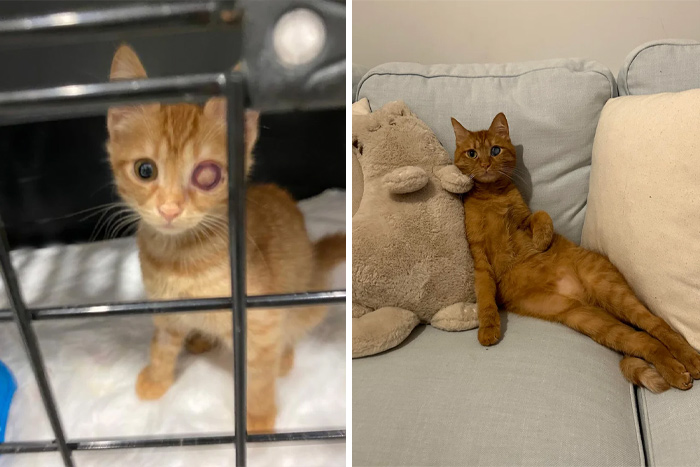
If the color is not destiny, what explains the chaos reel? Environment. Energy needs. Instincts looking for an outlet. “What many people view as ‘problem behaviors’ are often just normal feline behaviors without proper outlets,” Campbell explained. A cat who sprints at 2 a.m. is not plotting. It is practicing. A cat in the trash can is not rude. It is foraging.
6. The black cat said “absolutely not” to family photos.

Behavioral experts suggest that the unpredictability of cats, especially orange ones, is tied to their natural instincts. According to Gretchen Rubin, a happiness researcher, "Cats are curious creatures by nature, and their playful behavior is often a reflection of their innate desire to explore." This curiosity often manifests in playful chaos, from knocking over items to staging dramatic entrances. Understanding this can help cat owners appreciate their pets' antics as expressions of their personality rather than mischief.
That is why Campbell puts play at the center of calm. “We have welcomed these fierce predators into our homes and their entire lives are to hunt, eat, groom, sleep. This is their life sequence and how they regulate their physical and emotional bodies,” she noted.
Short, focused play with a wand toy twice a day for 10 to 20 minutes, then a meal or snack, can change everything. “Your cat is going to be happier, less anxious, more confident, and more connected to you!” said Campbell.
7. Operation Hide-and-Meow is going exactly as planned.

It also means resetting expectations. “For too long, the bar for cat care has been set far too low,” Campbell insisted. “Cats aren’t low-maintenance pets, they’re intelligent, instinct-driven animals with real needs. Many behavioral issues that land cats in shelters are completely preventable if we meet those needs,” she said.
8. Those are the teeth of a creature plotting revenge in silence.
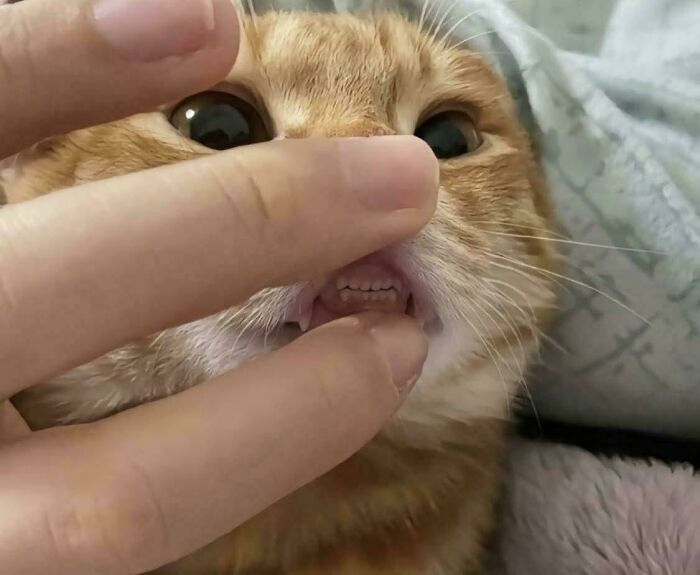
Meanwhile, the orange cat feed keeps serving. A whiskered lifeguard warming a hypothermic hiker through the night. A bonded pair who arrive at the door at the exact same time every day because someone fed them once. A one-eyed survivor who looks like mischief and hope in one face. Each post is a tiny story about care, patience, and the way humor softens sharp edges. Maybe that is the real reason orange cats feel different. We keep telling their stories together.
9. Tried soap for the first time. Immediate regret.

Understanding Cat Behavior
Many cat owners may find themselves puzzled by their pet’s behavior. Dr. Jackson Galaxy, a well-known cat behaviorist, emphasizes that understanding a cat’s body language is key to fostering a harmonious relationship.
He explains that subtle signals, such as tail positioning and ear orientation, can indicate a cat's mood. By recognizing these cues, owners can create a more supportive environment that caters to their feline's emotional needs, ultimately leading to a happier home.
10. Comfort level: suffocatingly affectionate.
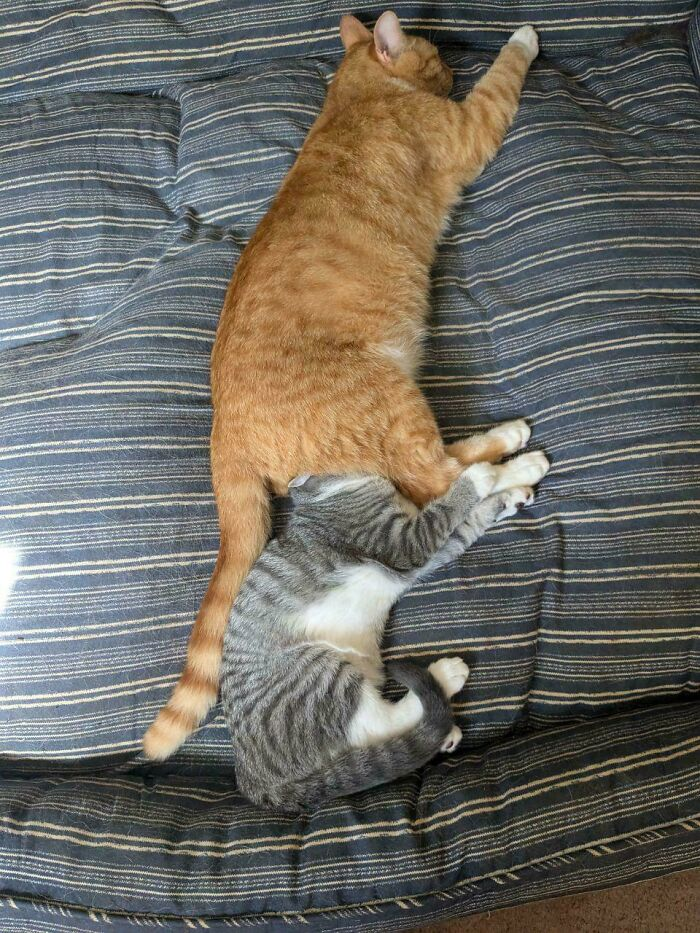
11. Every day at 5 p.m., they appear. The Dinner Twins.
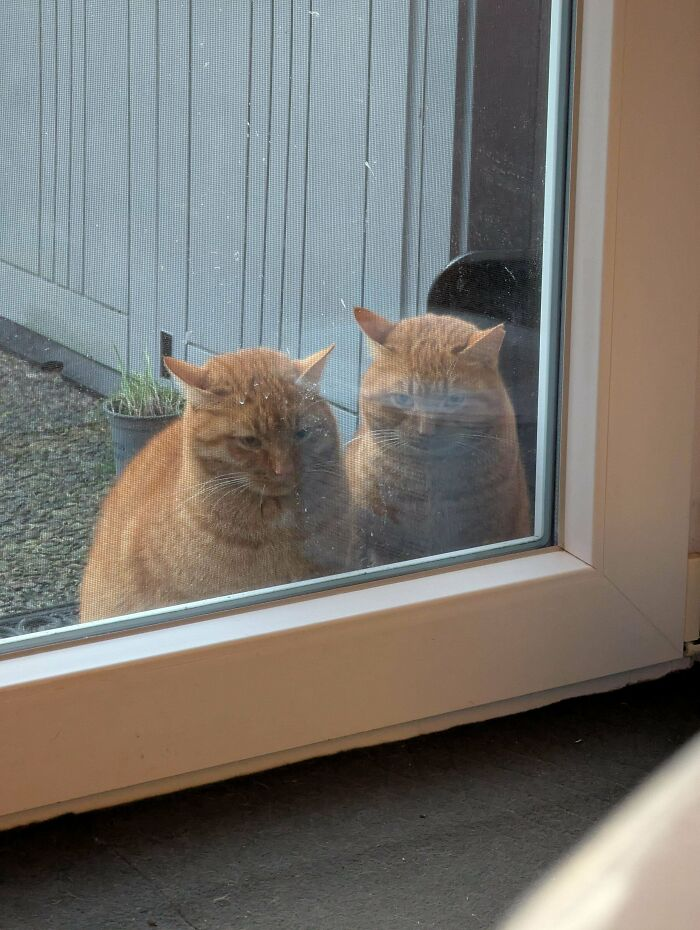
12. Breaking news: orange cat evolves into aquatic form.
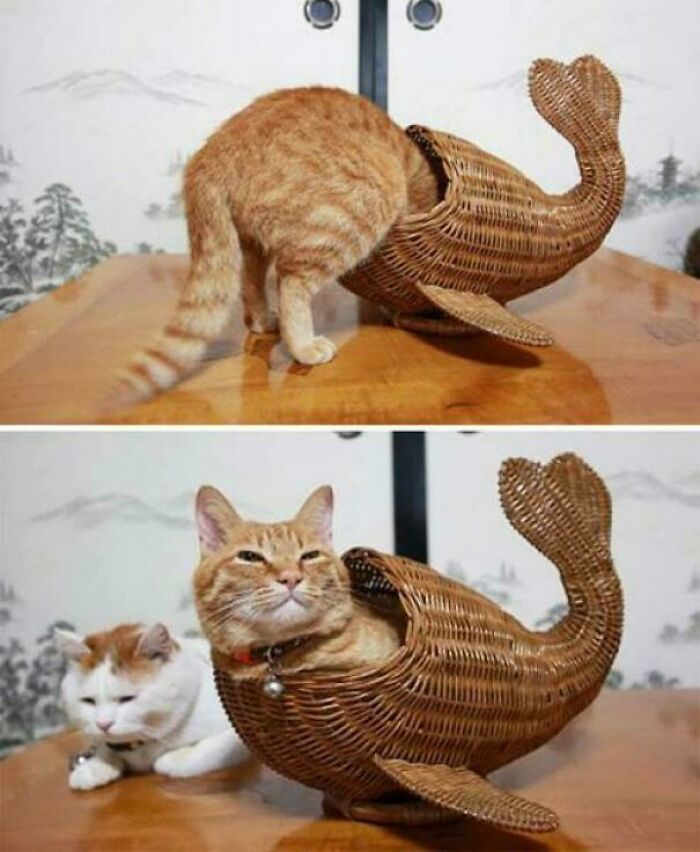
According to Dr. Jennifer Coates, a veterinary advisor, orange cats are often associated with certain health traits. For instance, while they can be prone to obesity, regular exercise and a balanced diet can mitigate such risks.
Dr. Coates advises owners to engage their pets with interactive toys and scheduled playtime to maintain their health. This not only benefits the cat physically but also strengthens the bond between pet and owner.
13. His first snow report: 10/10 confusion, 0/10 warmth.
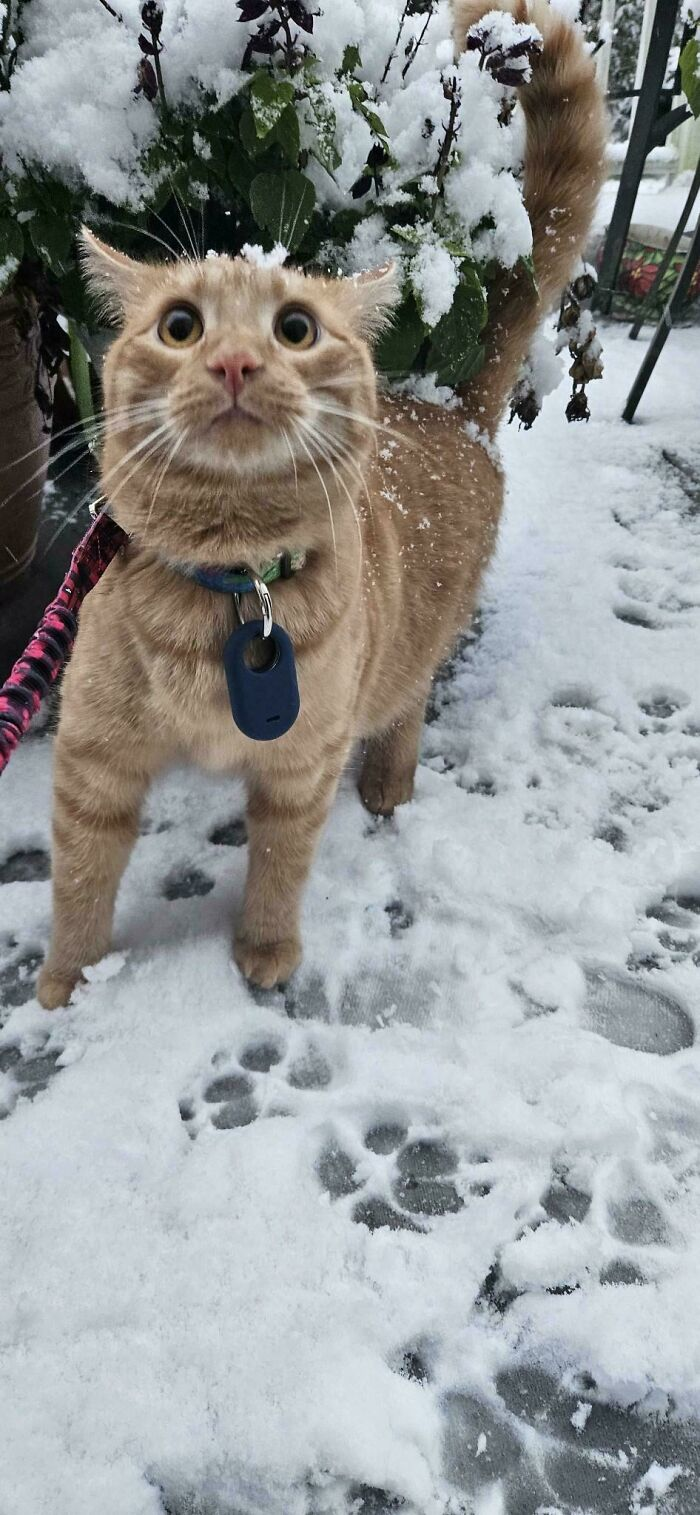
14. One eye, endless courage — the hero we didn’t deserve.

15. Zero brain cells, infinite flexibility.
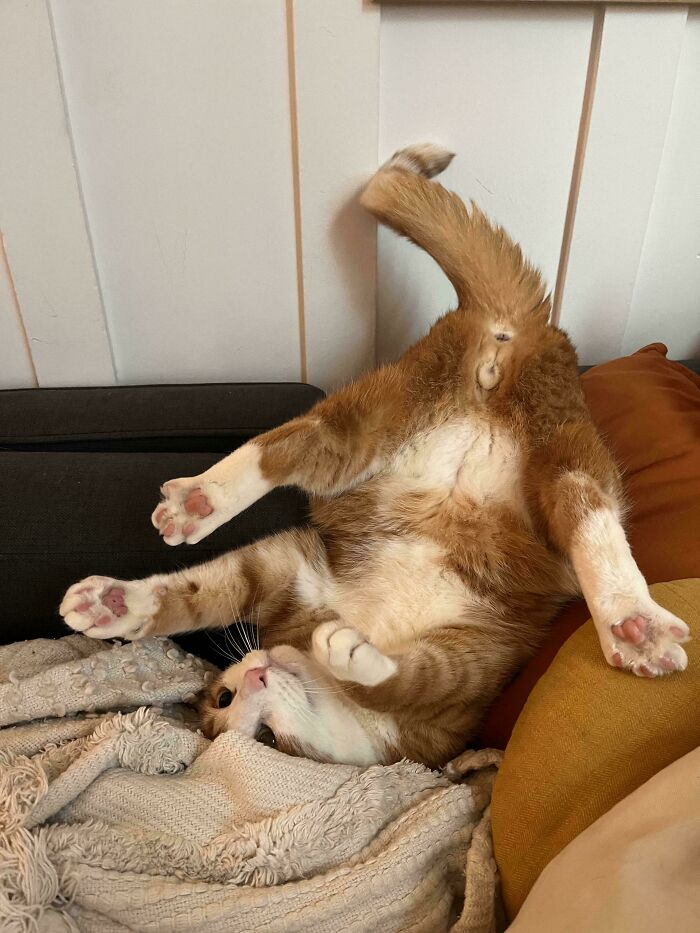
Cultural Significance of Cats
The internet's fascination with cats, especially orange ones, reflects broader cultural themes. Dr. Angela Duckworth, a psychologist known for her work on grit, notes that pets can offer emotional support during challenging times.
In her research, she highlights how interactions with animals can boost one's mood, suggesting that the silliness of orange cats can serve as a form of stress relief. Embracing this can enhance our appreciation of these pets as more than just companions but as emotional allies.
16. Reunited and refusing to let go — emotionally or physically.
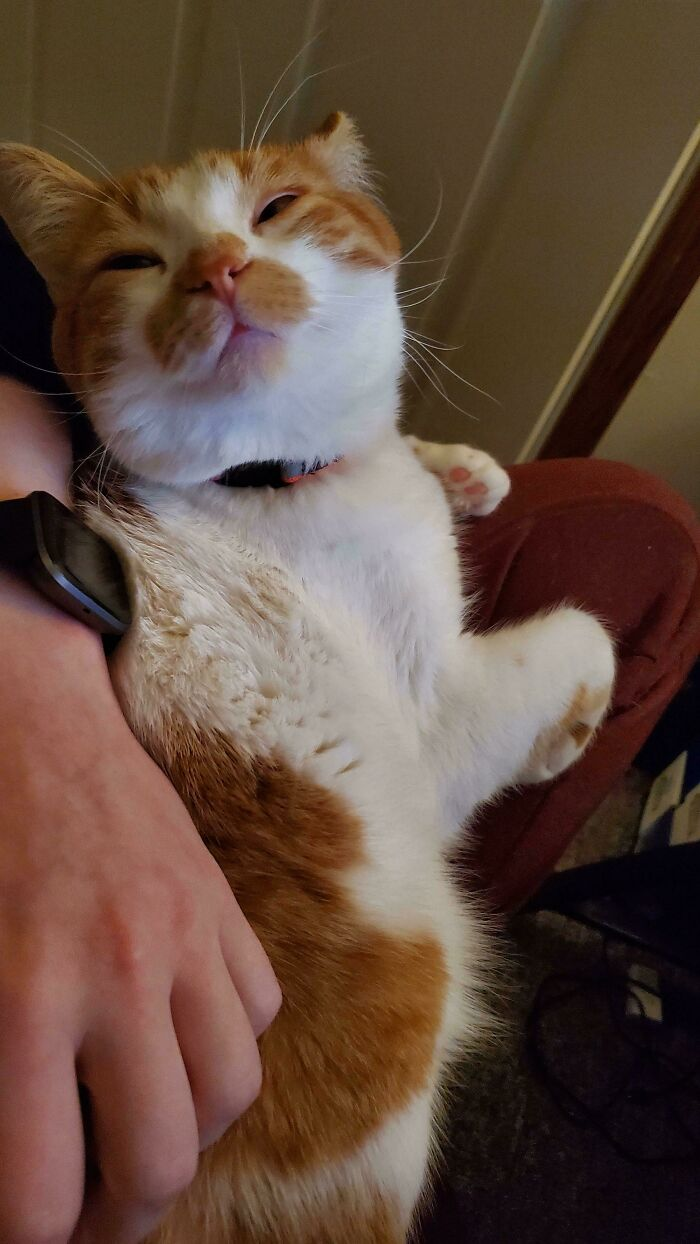
17. The ultimate yin and yang—if both halves were powered by naps and snacks.
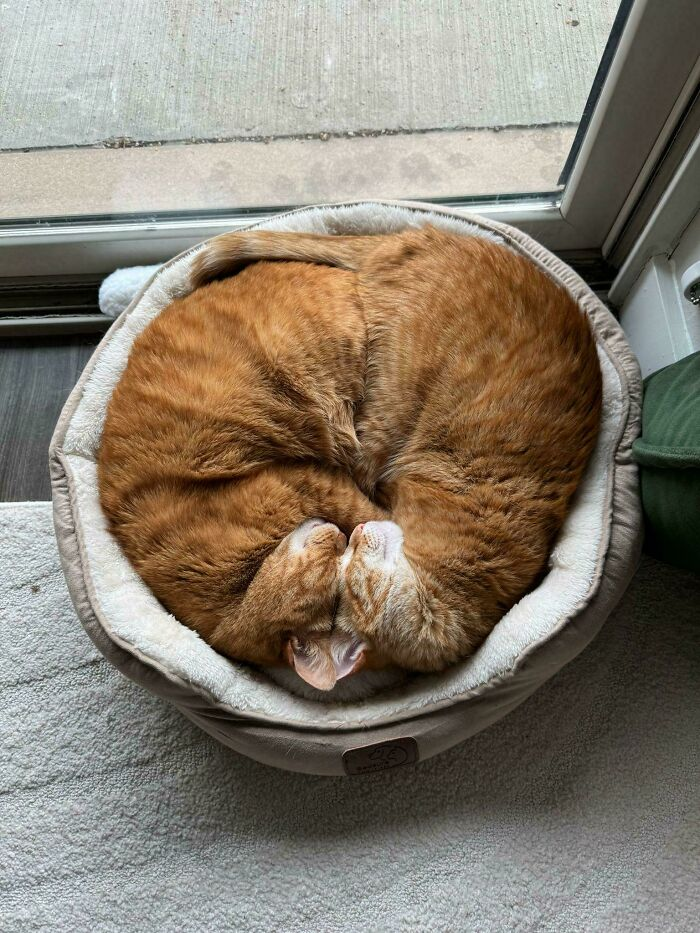
18. He’s either about to sprint across the room or confess his deepest secret.
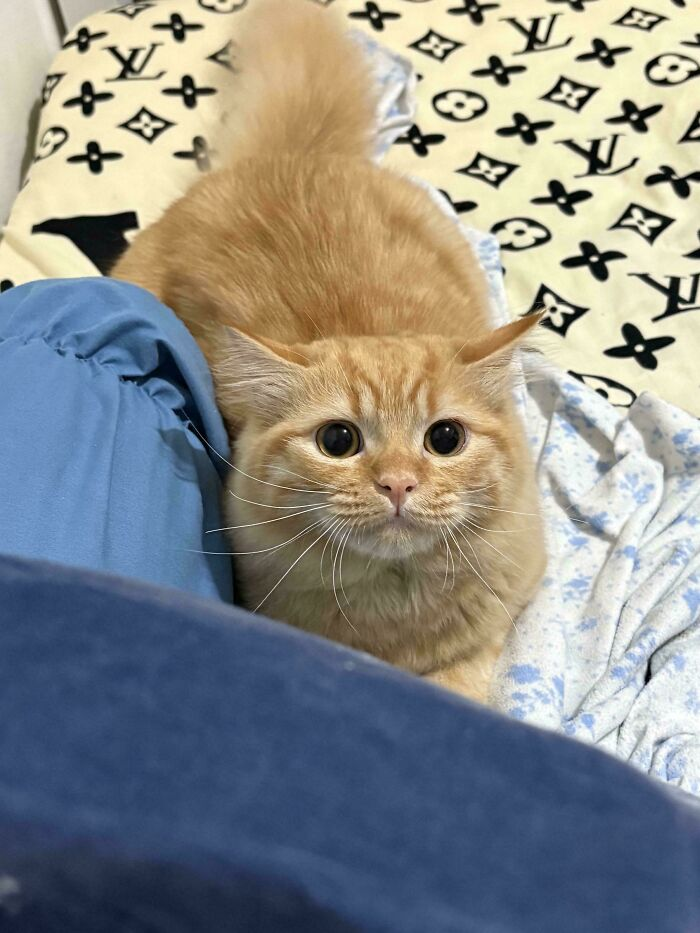
Engaging with orange cats can be more than entertaining; it also provides significant mental health benefits. A study by Psychology Today indicates that pet ownership can reduce anxiety and depression.
Having a quirky orange cat around can encourage laughter and joy, acting as a natural mood booster. For those struggling with mental health challenges, adopting a pet could be a beneficial step toward emotional stability.
19. Three brain cells, one collective nap.

20. The ancient prophecy spoke of the Chosen One who’d sit in the center.
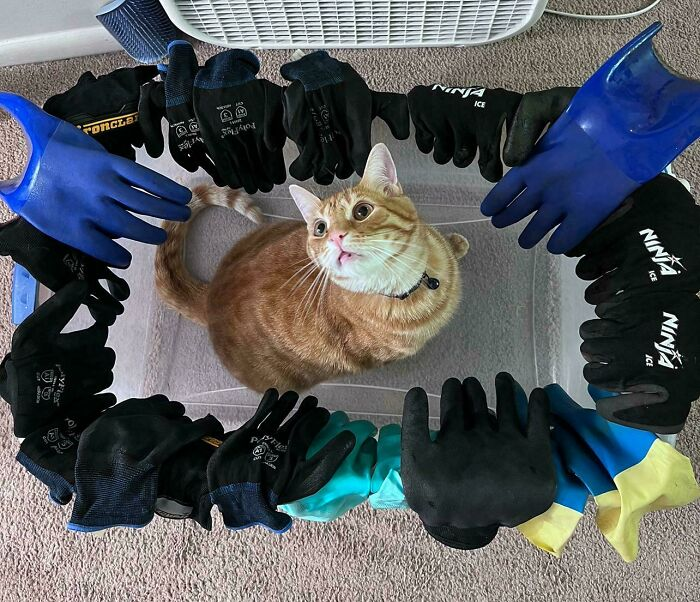
21. He wanted water, discovered physics instead.

Playful Training Tips
To maximize the playful nature of orange cats, experts recommend structured play sessions. Pam Johnson-Bennett emphasizes that using interactive toys can channel their energy positively.
By setting aside dedicated time for play, owners can stimulate their cats both physically and mentally. This approach not only helps in reducing unwanted behaviors but also strengthens the bond between cat and owner, creating a more harmonious living environment.
22. The intern fell asleep on the job again. Still gets paid in treats.
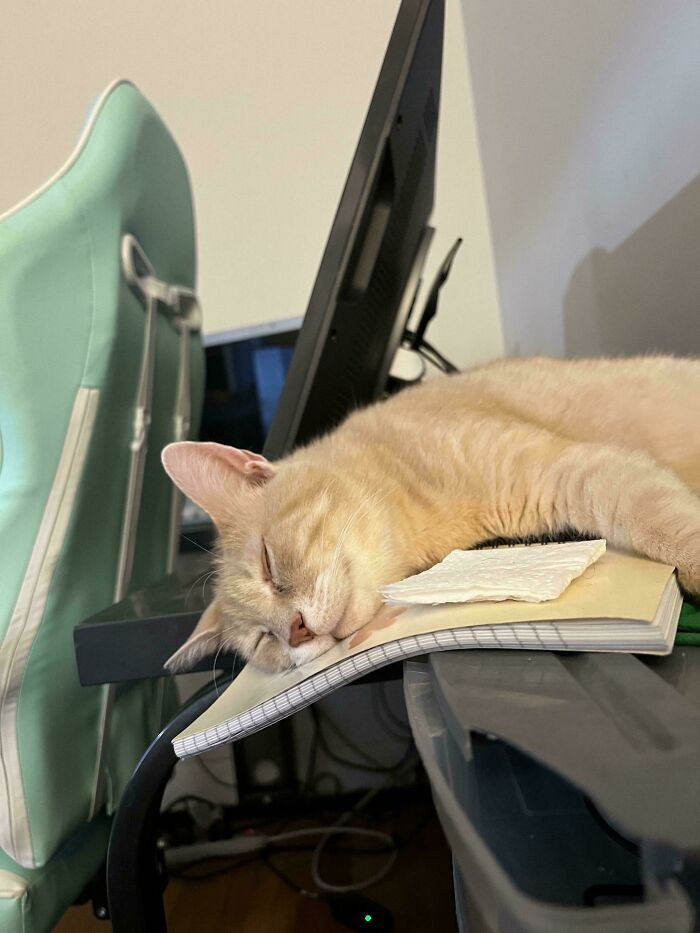
23. Proof that evolution peaked with the orange shrimp cat.
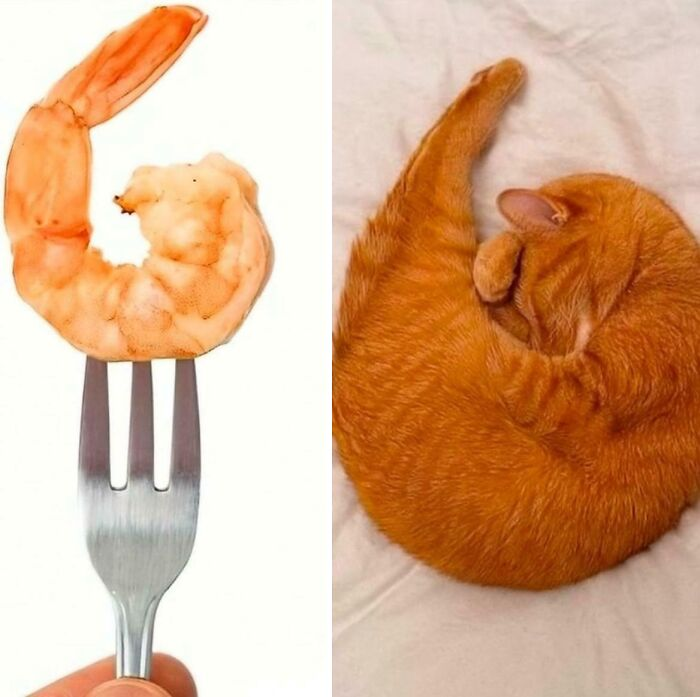
24. Proof that second chances come with extra purrs.
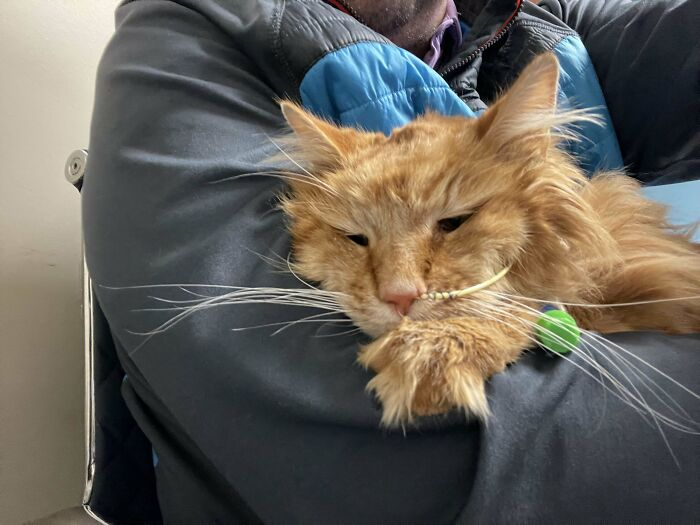
Understanding the quirks of orange cats can help owners better manage their behaviors. According to Dr. John Bradshaw, a leading cat behaviorist, many common myths about cat behavior can complicate the owner-pet relationship.
For instance, many people believe that cats are solitary creatures, but they can thrive on social interaction. Educating oneself about cat behavior can lead to a more enriching experience for both parties involved.
25. The face he makes when someone opens a bag of chips and doesn’t offer him any.
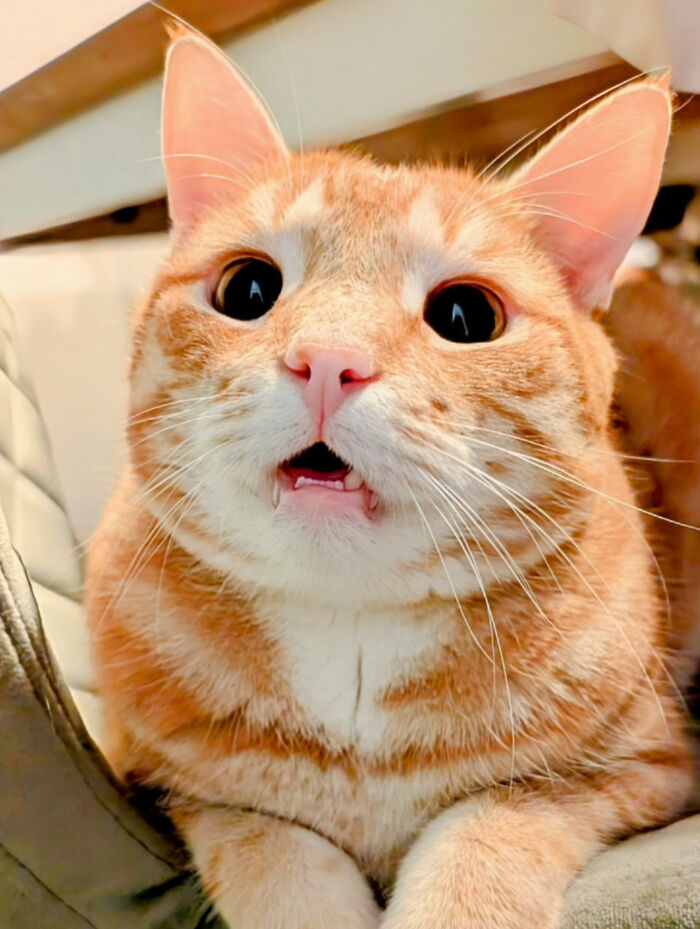
26. He swears he didn’t eat the marker, but the evidence is… colorful.
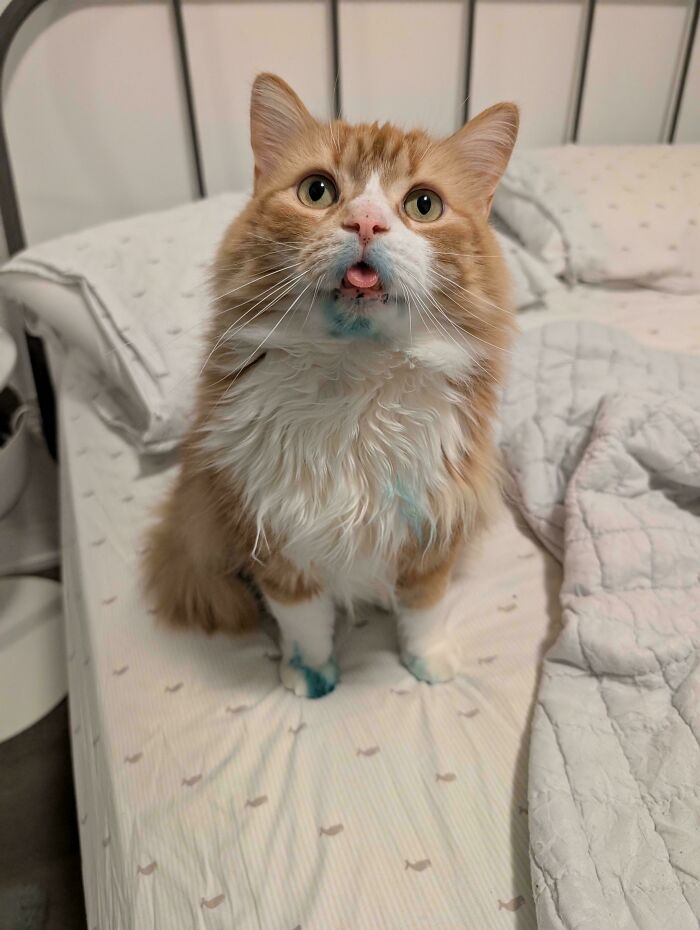
27. The Renaissance had Michelangelo. We have these guys and their orange muses.

The Impact of Social Media
The rise of social media has only intensified the popularity of orange cats. Experts like Gretchen Rubin, happiness researcher, note that “sharing the joyful moments of our pets can significantly enhance our own happiness.” By sharing hilarious antics online, owners not only spread joy but also create a community around their love for these pets. This phenomenon demonstrates how shared experiences can connect individuals, fostering a sense of belonging through a shared love for orange cats.
28. He’s holding paws for emotional support—and maybe leverage to turn the car around.
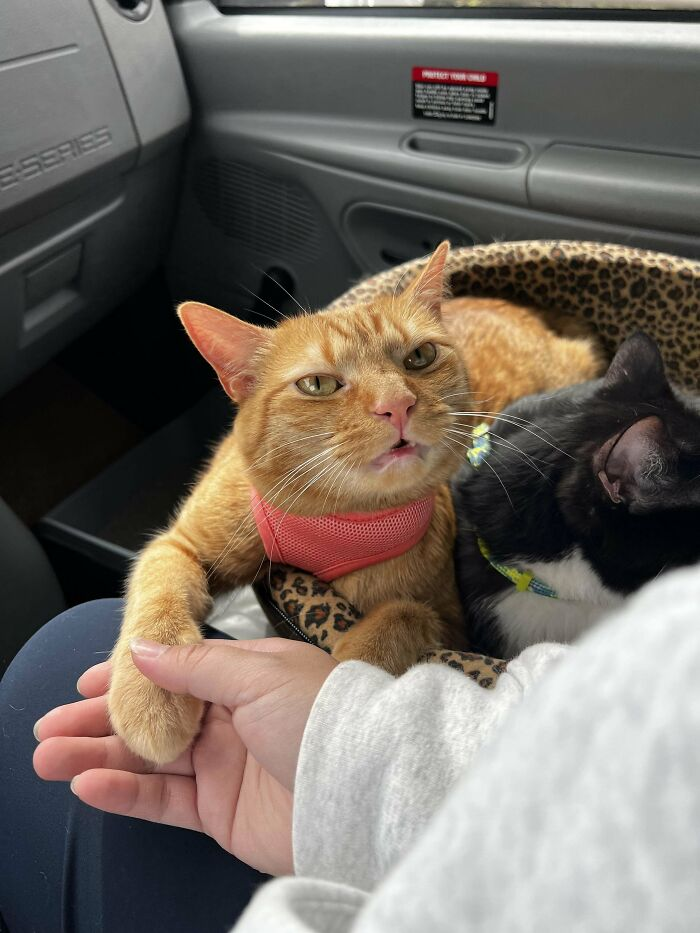
29. This yoga pose is called “The Cinnamon Twist.”

30. The cat looks one bounce away from calling his lawyer.

Behavioral experts note that the unpredictability of orange cats is a significant part of their appeal. Dr. Temple Grandin, a prominent animal behaviorist, explains that this unpredictability can often reflect their natural instincts as predators.
Understanding this aspect can help owners appreciate their cats' quirks and even manage them better. By creating a stimulating environment that allows for exploration, owners can encourage healthy behaviors while minimizing potential chaos.
31. Six oranges and one espresso shot.
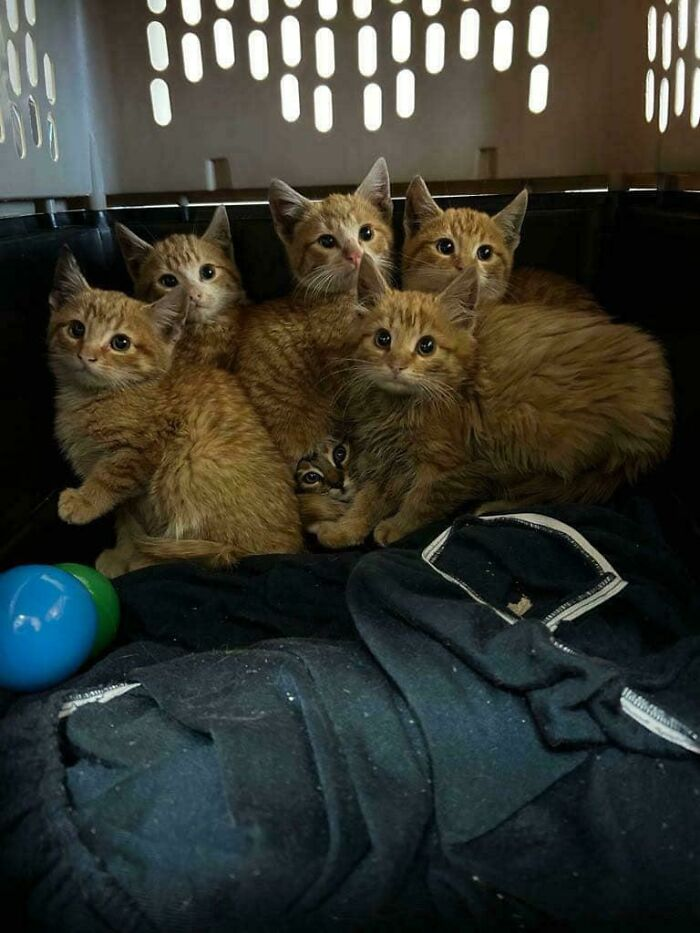
32. Rent’s due, and this feline just claimed the nursery.

33. Proof that being down one eye doesn’t mean being down on spirit.
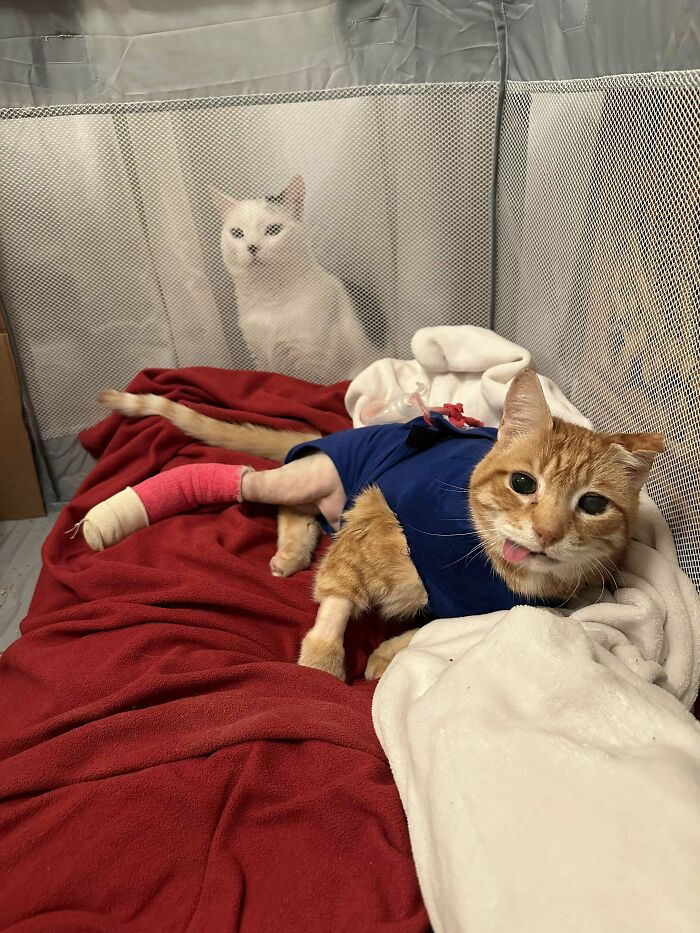
Adoption and Rescue
Adopting an orange cat can also be a fulfilling experience. According to Dr. Lawrence Cohen, a child psychologist and parenting expert, pets can play a crucial role in children's emotional development.
When families adopt cats, they not only provide a home for an animal in need but also teach children about responsibility and compassion. This dual benefit emphasizes the importance of considering adoption as a viable option for families looking to add a furry member to their household.
34. Fresh from the salon and already regretting everything.
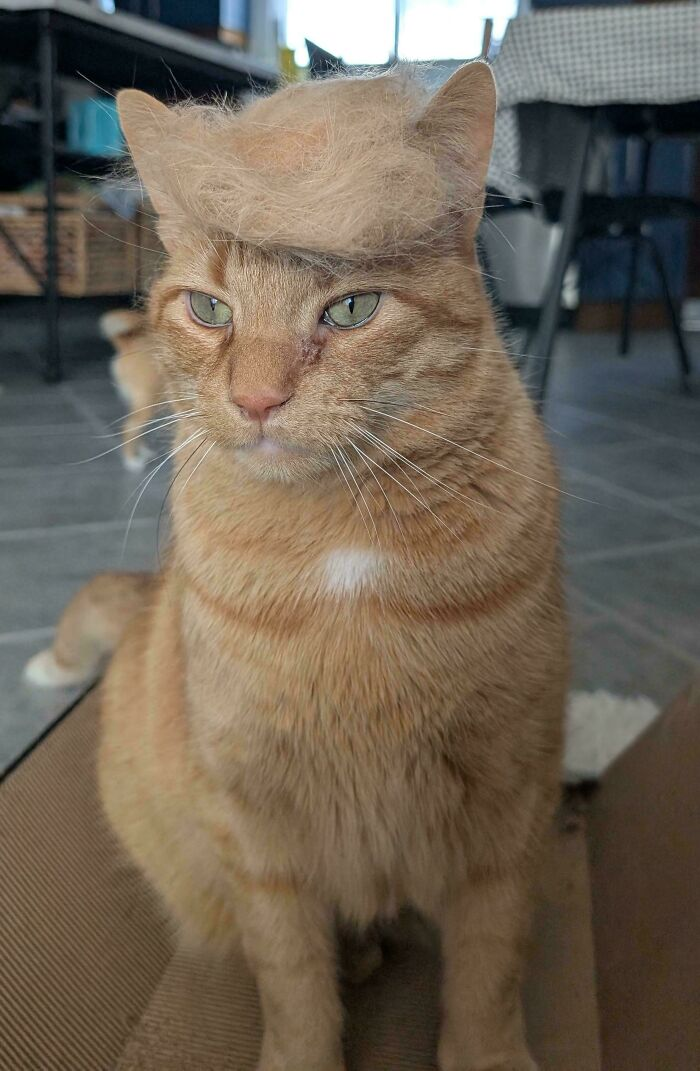
35. Meet the percussion section: loud when they want to be, asleep the rest of the time.
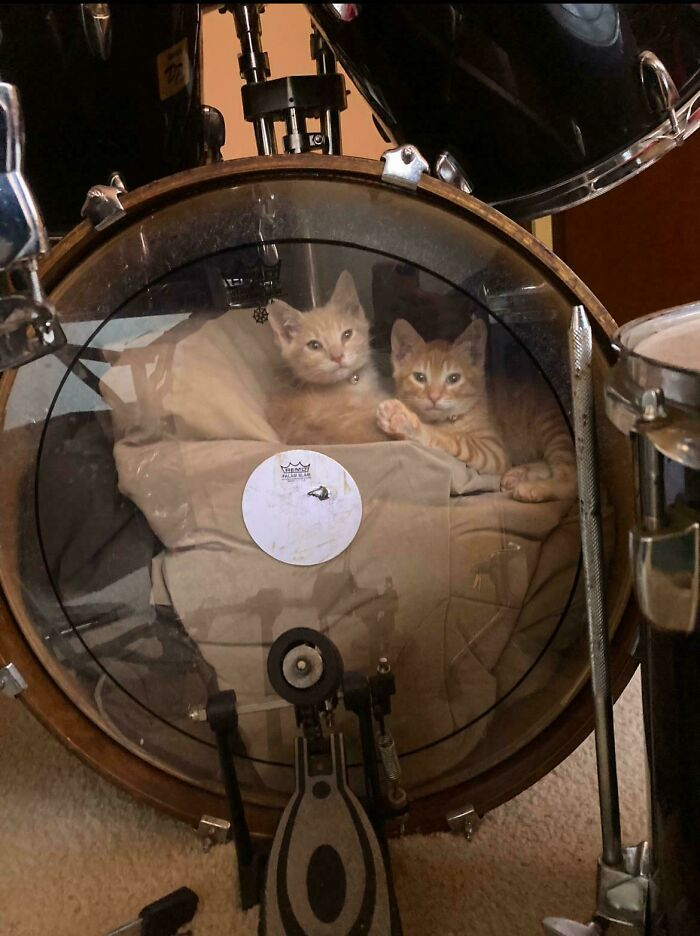
36. Not angry, just deeply, cosmically disappointed in everything.
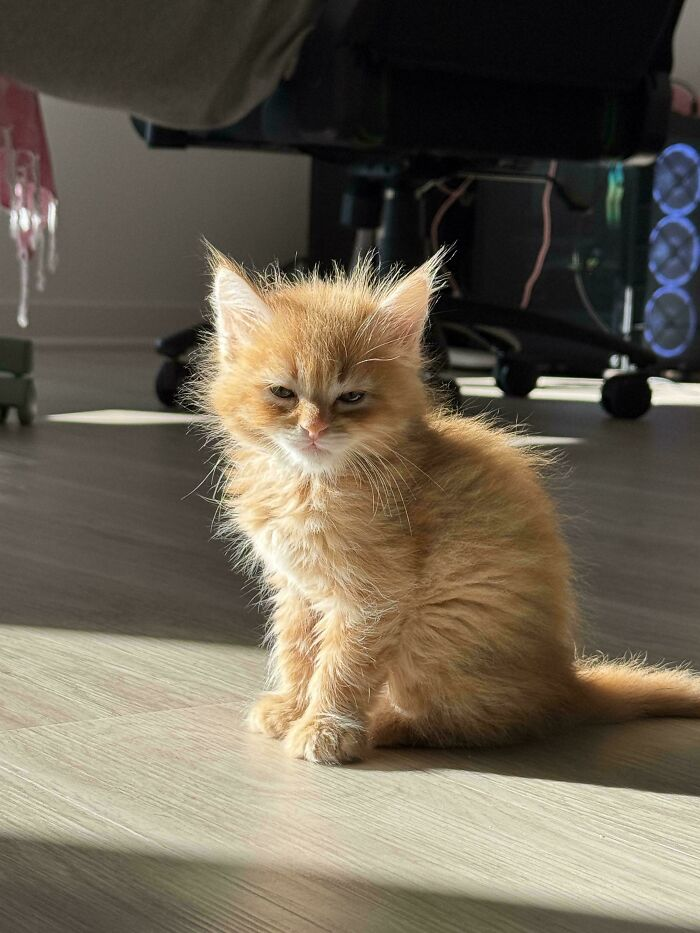
Many cat owners are unaware of the importance of mental stimulation for their pets. Experts recommend incorporating puzzle toys and interactive play into daily routines. Dr. John Bradshaw emphasizes that these activities nurture a cat's natural instincts.
By engaging their minds, owners can help prevent boredom-related behavioral issues, ensuring a happier and healthier cat. This proactive approach is beneficial not only for the cat but also for the owner's peace of mind.
37. Sunshine, flowers, and a healthy dose of superiority.

38. Practicing for the Cirque du Soleil audition he wasn’t invited to.

39. The official transfer of power has been completed.
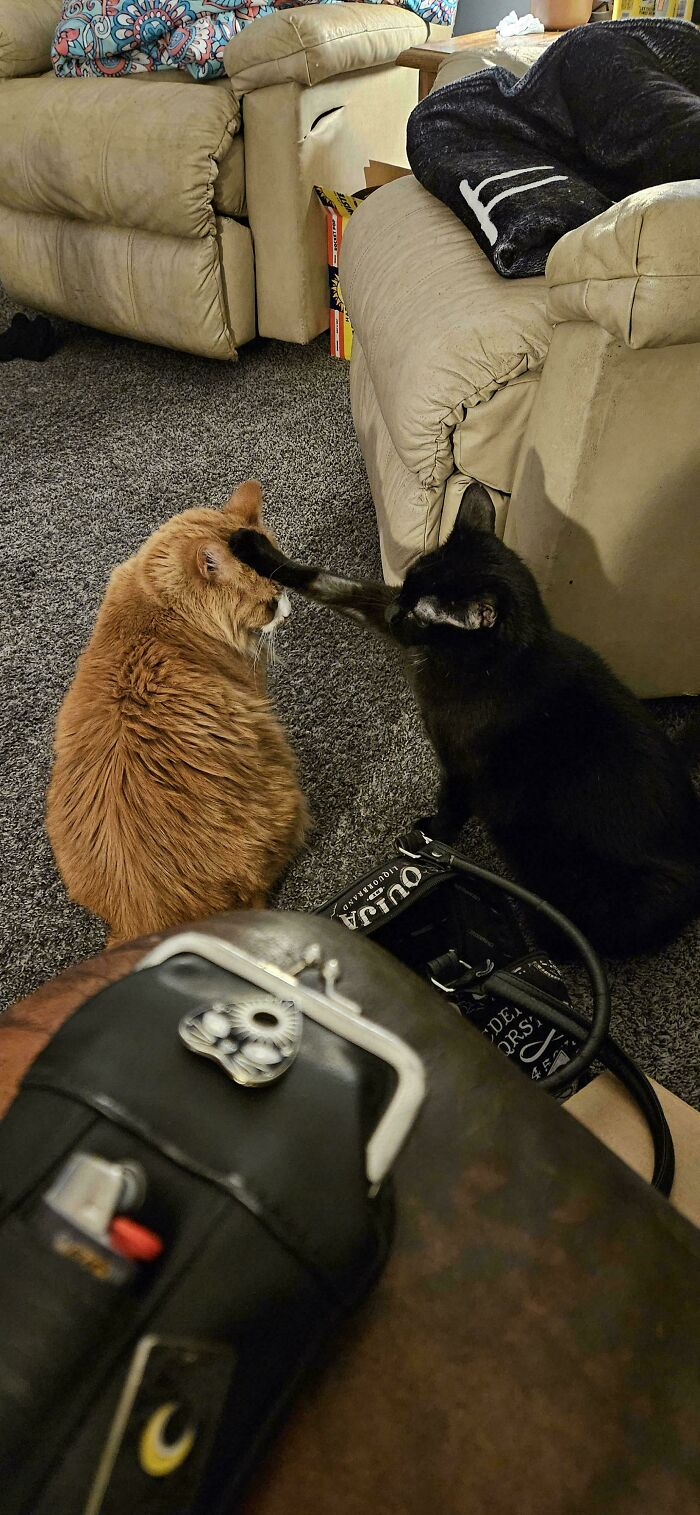
The Role of Humor in Pet Ownership
Humor plays a vital role in pet ownership, especially with cats that have quirky personalities. Dr. Tal Ben-Shahar, a happiness researcher, suggests that finding joy in everyday moments can enhance overall well-being.
Orange cats, with their playful antics, often provide countless opportunities for laughter. Embracing these moments can foster a positive atmosphere at home, benefiting both the pet and the owner. This joyful interaction is essential for building a strong emotional bond.
40. The face of a cat who’s over Christmas dinner before it even starts.

41. Love is patient, love is kind, love also can’t breathe right now.

42. Those are not paws — those are perfectly aligned breadsticks of power.
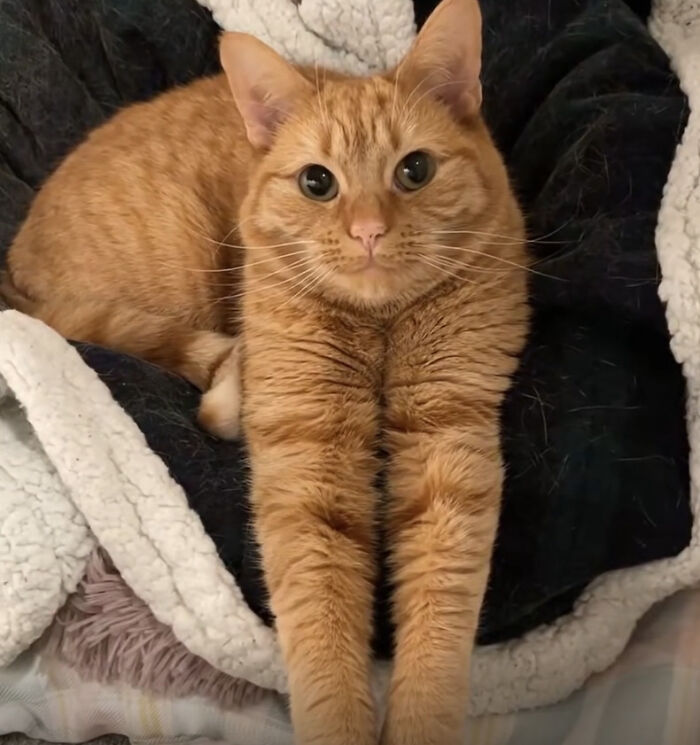
The unpredictability of orange cats can lead to unique challenges for owners. A relationship expert noted that understanding and patience are key in navigating these challenges.
As many orange cats exhibit strong personalities, owners can benefit from learning effective communication techniques to better connect with their pets. This, in turn, fosters a more harmonious relationship, allowing for mutual understanding and respect.
43. That’s the face of a cat who just realized the treat bag wasn’t for them.
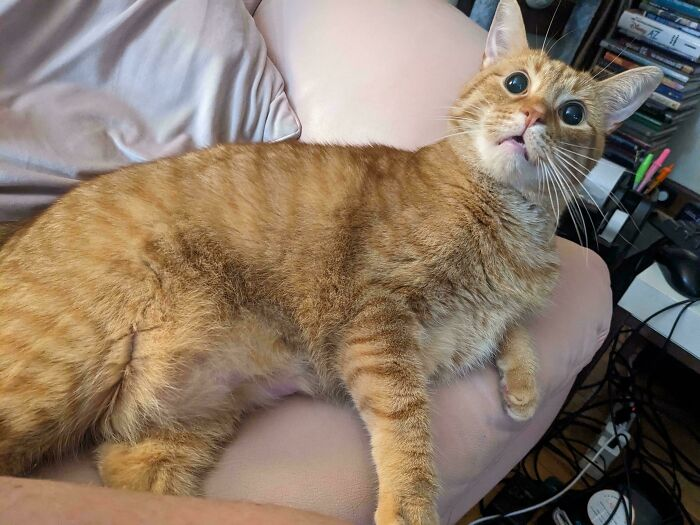
44. The look of someone who’s 90% fur, 10% existential dread.
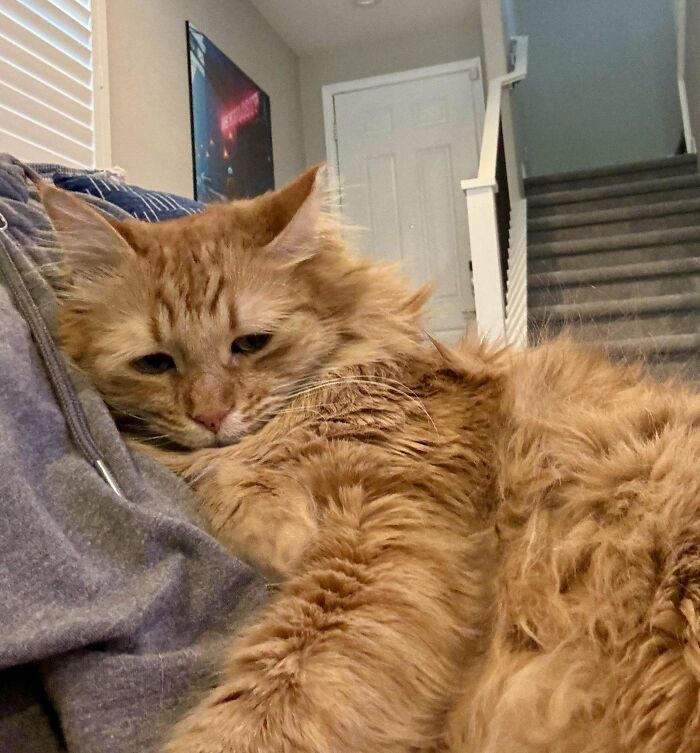
45. He’s seen things… like the bottom of his empty food bowl.
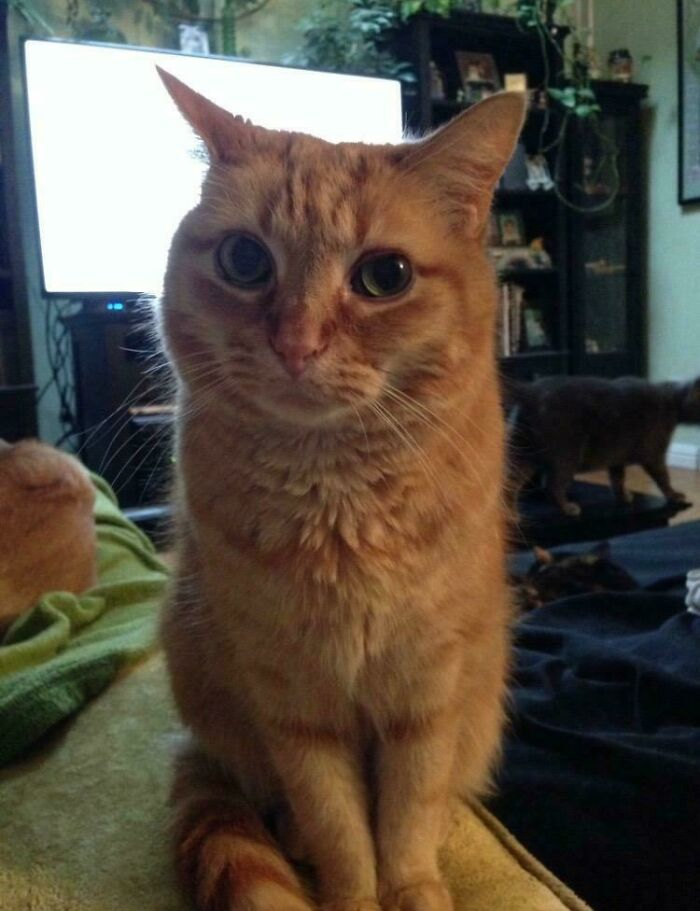
Health Considerations
Orange cats, like all pets, require regular veterinary care to stay healthy. Dr. Michael Greger, a nutrition expert, emphasizes the importance of a balanced diet tailored to a cat's specific needs.
Regular check-ups and vaccinations can prevent health issues, ensuring that your feline friend stays happy and active. By prioritizing their health, owners can enjoy the playful antics of their orange companions for years to come.
46. Found in a dumpster, upgraded to main character status.
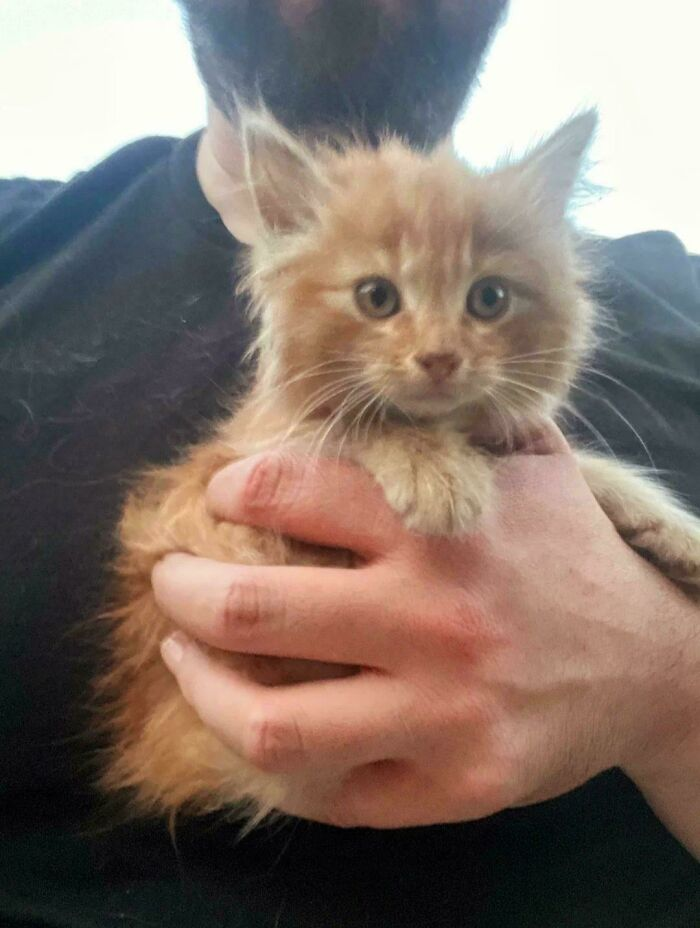
47. Introducing the world’s first purr-powered monorail.

48. He’s not spying. He’s conducting “important fence business.”

49. The smug little face of someone who just discovered cardboard boxes are free real estate.
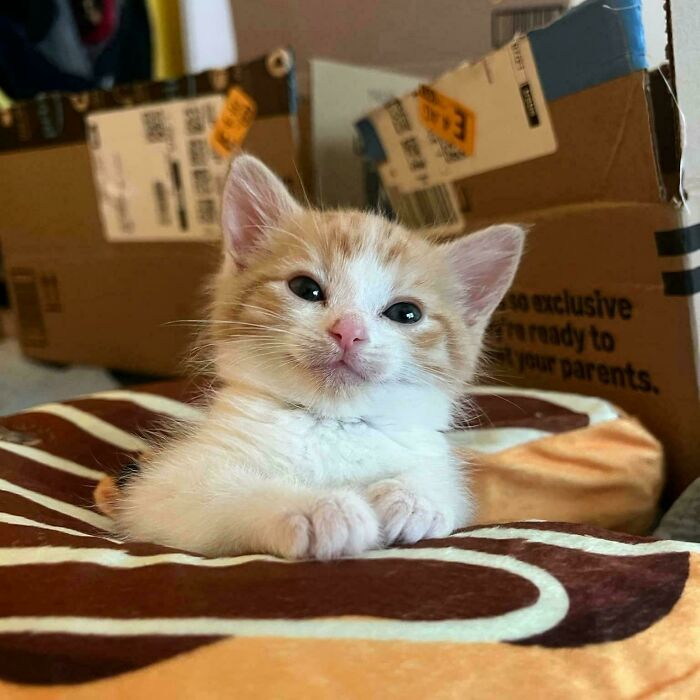
50. Mission accomplished: both rescuer and rescuee accounted for.
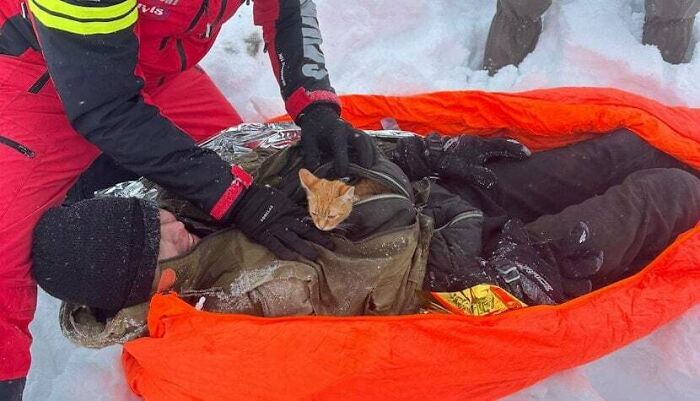
Orange cats are loud characters, sure, but every cat brings a chapter of its own. What we choose to notice, train, and celebrate becomes the story we tell. If your cat feels “extra,” try adding play, routine, and a little grace.
If you are thinking about adoption, meet the individual, not the meme. Your new best friend could be ginger, black, white, or a patchwork of all three. Now your turn. Which post made you laugh or tear up today, and why? Drop your take, tag a cat person, and share this with the group chat!
In summary, orange cats bring a unique blend of joy, humor, and companionship into our lives. Their unpredictable antics not only entertain but also serve as reminders of the importance of emotional bonds between pets and their owners.
By understanding their behavior, providing mental stimulation, and prioritizing health, we can cultivate a thriving environment for these vibrant companions. Embracing the quirks of orange cats deepens our appreciation for them, ultimately enriching our lives in countless ways.
